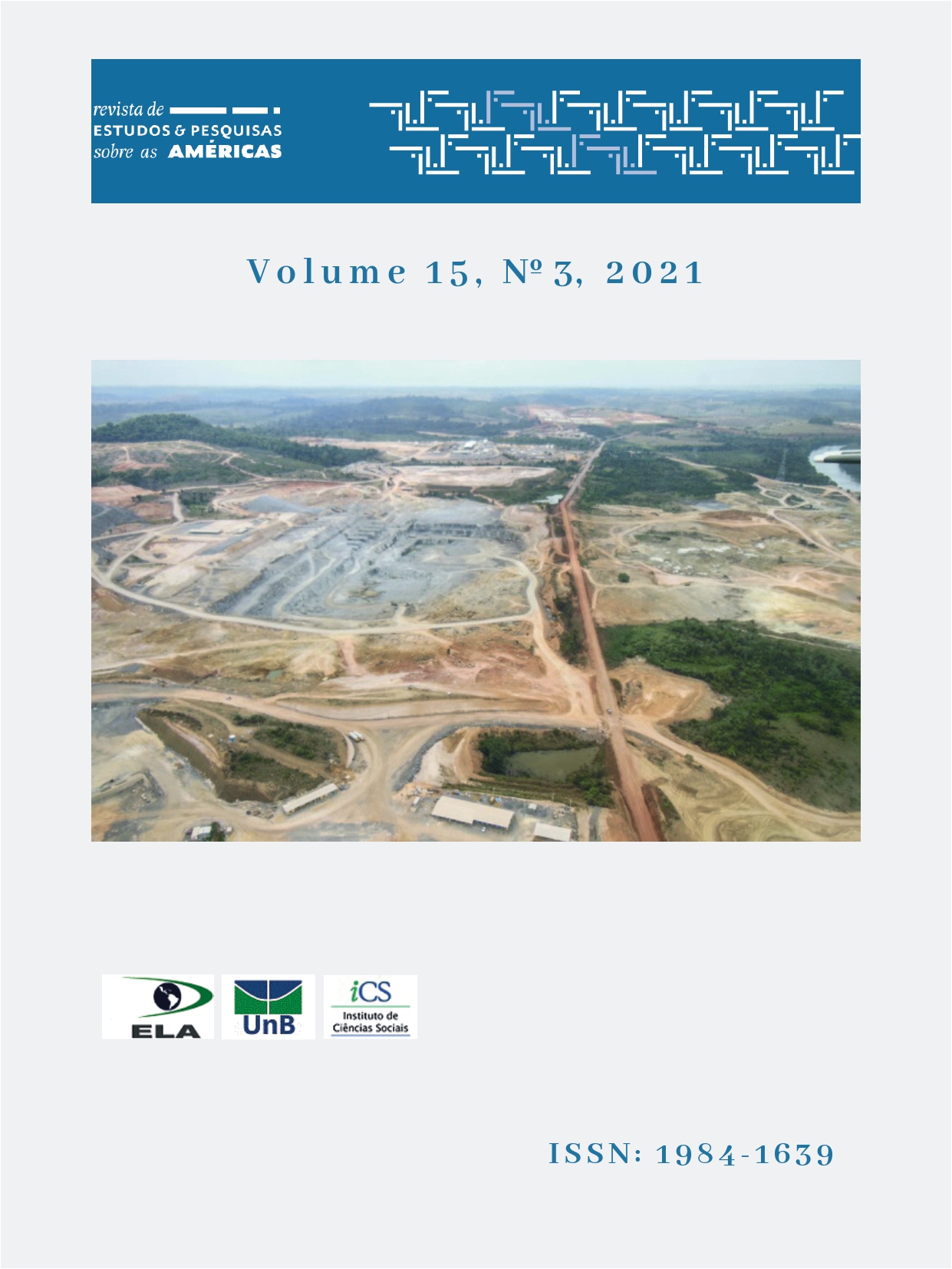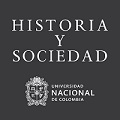Recent transformations in the international economic plan:
a parallel analysis of the rise of the Asian “giant” and Latin American stagnation
DOI:
https://doi.org/10.21057/10.21057/repamv15n3.2021.35761Keywords:
Politicas econômicas, China, América Latina, Hegemonia americanaAbstract
The present article is a historical, parallel study of the paths and choices for the economies that pay the doses of the international economy: the Chinese and the Latin American. The historical cut runs essentially through the 1970s and 1990s, seeking to elucidate geopolitical transformations and the actions of this era. As a method of analysis, a three-dimensional view of the facts underlying the status quo of the international economic plan is sought. First, the international is explored, with an emphasis on the reaffirmation of US hegemony; Then, the argument is directed to the developmental patterns adopted by the Chinese government; Finally, we review the progress of liberal policies and the international economy in Latin America. It was verified, therefore, that the different historical magazines, ruled by divergent models of economic terms, collaborated to the allocation of the two regions in different places within the hierarchy of world power.
Downloads
References
ARRIGHI, G. Adam Smith em Pequim: origens e fundamentos do século XXI. Tradução Beatriz Medina.
Boitempo. São Paulo, 2008.
BARBOSA, A. F. China e América Latina na nova divisão internacional do trabalho. In: Ferreira Leão, R.; Pinto,
E.C.; Acioly, L. A China na Nova Configuração Global. Impactos políticos e econômicos, IPEA, 2011.
BEKERMAN, M. et al. Transformações recentes da economia chinesa: impacto sobre suas relações comerciais com a América Latina. IPEA. Revista tempo do mundo, 2013.
CANO, W. Soberania e Política Econômica na América Latina. São Paulo. Editora UNESP, 2000.
_________. América Latina: do desenvolvimento ao neoliberalismo. In: FIORI, J. L. (organizador). Estados
e moedas no desenvolvimento das nações. Rio de Janeiro. Editora: Vozes, 2012.
CHESNAIS, F. A mundialização financeira: gênese, custo e apostas. Tradução de Maria Roldão. Instituto
Piaget. Lisboa, 1996.
_____________. A finança mundializada: raízes sociais e políticas, configuração e consequência. Tradução de Rosa Maria Marques e Paulo Nakatani. São Paulo, Boitempo, 2005.
COMTRADE. Internacional Trade Statistics Database <http://comtrade.un.org/> Disponível em: 10 de junho 2016
CUNHA. A. M. Crescimento e internacionalização da China: impactos potenciais na América Latina. XII
Encontro Nacional de Economia Política. São Paulo, 2007.
FIORI, J. L. Sistema Mundial e América Latina: mudanças e perspectivas. São Paulo, junho, 2006.
___________. (Organizador). Estados e moedas no desenvolvimento das nações. Rio de Janeiro. Editora:
Vozes, 2012.
__________. História, estratégia e desenvolvimento: para uma geopolítica do capitalismo. 1ª Edição. São
Paulo: Boitempo, 2014.
LIMA, M. C. [Org.] Sobre a China. Recife, Ed. UFPE, 2018.
MEDEIROS, C. A. Globalização e a inserção diferenciada da Ásia e América Latina. In: Tavares, Maria da
Conceição; FIORI, José Luís (orgs.). Poder e dinheiro: uma economia política da globalização. Petrópolis,
RJ: Editora Vozes, 1997.
_______________. A China como um Duplo Polo na Economia Mundial e a Recentralização da Economia
Asiática. Revista de Economia Política, 2006.
_______________. China: entre os Séculos XX e XXI. In: FIORI, J. L. (organizador). Estados e moedas no
desenvolvimento das nações. Rio de Janeiro. Editora: Vozes, 2012a.
_______________. Notas sobre o Desenvolvimento Econômico Recente na China. Instituto de Estudos
Avançados da Universidade de São Paulo, 2012b.
NASSIF, A. O modelo centro-periferia e a economia política da Cepal: ontem e hoje. 49º Encontro Nacional
de Economia da Associação do Centro de Pós-graduação em economia (ANPEC), 2021.
PINTO, E. C. O eixo sino-americano e as transformações do sistema mundial: tensões e complementariedades
comerciais, produtivas e financeiras. In: Ferreira Leão, R.; Pinto, E.C.; Acioly, L. A China na Nova Configuração Global. Impactos políticos e econômicos, IPEA, 2011.
___________. América Latina na primeira década do século XXI: “efeito China” e crescimento com inclusão,
Projeto Capacidades Humanas, Desenvolvimento e Políticas do Observatório NESP/UnB, 2013. PINTO, E.;
BALANCO, P. Transformações do capitalismo contemporâneo e os impactos para a América Latina:
retrospectivas, mudanças e perspectivas. UFRJ. Textos para discussão, 2013.
PREBISCH, E. O desenvolvimento econômico da América Latina e alguns de seus problemas principais. In:
Cinquenta anos de pensamento na CEPAL. Editora Record. Volume 1. Rio de Janeiro, São Paulo, 2000.
RODRIK, D. What’s so special about China’s Export? National Bureau of economic research. Cambridge,
January, 2006.
SANTOS, T. América Latina: democratização e ajuste estrutural. Porto Alegre, julho, 1996.
SOUZA, R. Estado e capital na China. Salvador. EDUFBA, 2018.
TAVARES, M. C.; FIORI. J. L. (Des) Ajuste global e modernização conservadora. Rio de Janeiro: Paz e Terra, 1993.
_______________. A retomada da hegemonia norte-americana. In: Tavares, Maria da Conceição; FIORI, José
Luís (orgs.). Poder e dinheiro: uma economia política da globalização. Petrópolis, RJ: Editora Vozes, 1997.
WORDBANK. Word Bank Group <http://www.worldbank.org/ > Disponível em: 20 de abril 2016.
Downloads
Published
How to Cite
Issue
Section
License

This work is licensed under a Creative Commons Attribution-NonCommercial 4.0 International License.
The published material is the property of the Journal, and may be reproduced in whole or in part with indication of the source.
Copyright: Authors will be responsible for obtaining the copyright of the material used. Authors who publish in this journal agree to the following terms:
a)Authors retain the copyright and grant the journal the right of first publication, with the work simultaneously licensed under
the Creative Commons Attribution License which allows the sharing of work with acknowledgment of authorship and initial publication in this journal.
b) Authors are authorized to take additional contracts separately, for non-exclusive distribution of the version of the work published in this journal (eg, publish in institutional repository or as a book chapter), with acknowledgment of authorship and initial publication in this journal.
c) Authors are allowed and encouraged to publish and distribute their work online (eg in institutional repositories or on their personal page) at any point before or during the editorial process, as this can generate productive changes as well as increase the impact and the citation of the published work (See The Effect of Free Access).
















